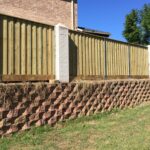Foundation cracks can be a major concern for property owners, especially when it comes to meeting the rigorous standards set by the National Standards for the Physical Inspection of Real Estate (NSPIRE). These standards, designed to ensure the safety and habitability of housing, have strict guidelines for various structural components, including the foundation. But how exactly do foundation cracks under NSPIRE affect inspection scores? Let’s delve into this issue and explore potential solutions.

Content
Understanding NSPIRE and Its Importance
The NSPIRE standards are implemented by the U.S. Department of Housing and Urban Development (HUD) to ensure that properties meet specific safety and quality criteria. These inspections are critical as they directly impact the property’s compliance status and can influence funding and occupancy rates. A significant part of the inspection focuses on the foundation, as any structural weakness can compromise the overall safety of the building.
Impact of Foundation Cracks on Inspection Scores
- Structural Integrity: Foundation cracks can indicate underlying structural issues. Under NSPIRE, inspectors assess the severity and implications of these cracks. Minor hairline cracks might not heavily impact scores, but larger cracks that suggest movement or instability can lead to significant point deductions.
- Water Infiltration: Cracks in the foundation can allow water to seep into the basement or crawl space, leading to moisture problems, mold growth, and potential health hazards. This not only impacts the structural integrity but also the living conditions within the property, thereby lowering inspection scores.
- Safety Concerns: Foundation cracks pose safety risks. If the cracks are extensive, they can indicate that the building might be unsafe for occupancy. NSPIRE inspections prioritize tenant safety, and any signs of potential danger will severely affect the overall inspection score.
Common Causes of Foundation Cracks
Several factors can lead to foundation cracks, including:
- Soil Movement: Expansive soils that swell and shrink with moisture changes can cause the foundation to shift and crack.
- Poor Construction: Substandard construction practices and materials can lead to early foundation problems.
- Water Damage: Poor drainage or plumbing leaks can erode the foundation over time.
Addressing Foundation Cracks to Improve Inspection Scores
- Regular Inspections and Maintenance: Routine inspections can help identify foundation issues early. Property owners should proactively address minor cracks before they escalate.
- Professional Assessment: Engaging a structural engineer to assess the foundation can provide an accurate diagnosis of the issue and recommend appropriate repairs.
- Effective Repairs: Using high-quality materials and professional repair services can ensure that foundation cracks are properly sealed and the underlying issues are resolved. This not only improves the structural integrity but also boosts inspection scores.
- Waterproofing Measures: Implementing waterproofing solutions can prevent water infiltration and further foundation damage. Proper grading, gutter systems, and drainage solutions are essential.
Conclusion
Understanding how foundation cracks under NSPIRE affect inspection scores is crucial for property owners looking to maintain compliance and ensure the safety of their buildings. By regularly inspecting, maintaining, and repairing foundation issues, owners can safeguard their properties and achieve better inspection outcomes.
By addressing these problems proactively, property owners can ensure their buildings remain safe, habitable, and compliant with NSPIRE standards, ultimately protecting their investments and the well-being of their occupants.

With a sharp eye for design and a passion for renovation, Samantha transforms fixer-uppers into dream homes. Her expertise in remodeling adds extra value to your real estate experience.










